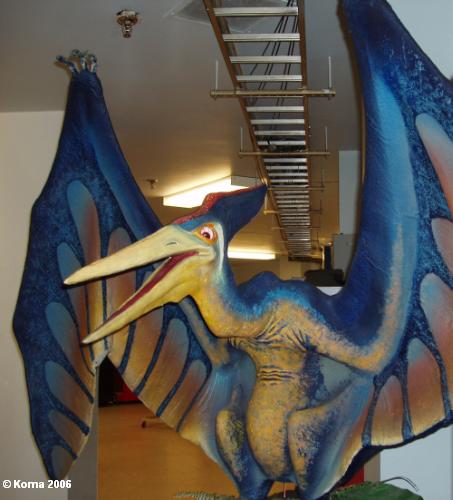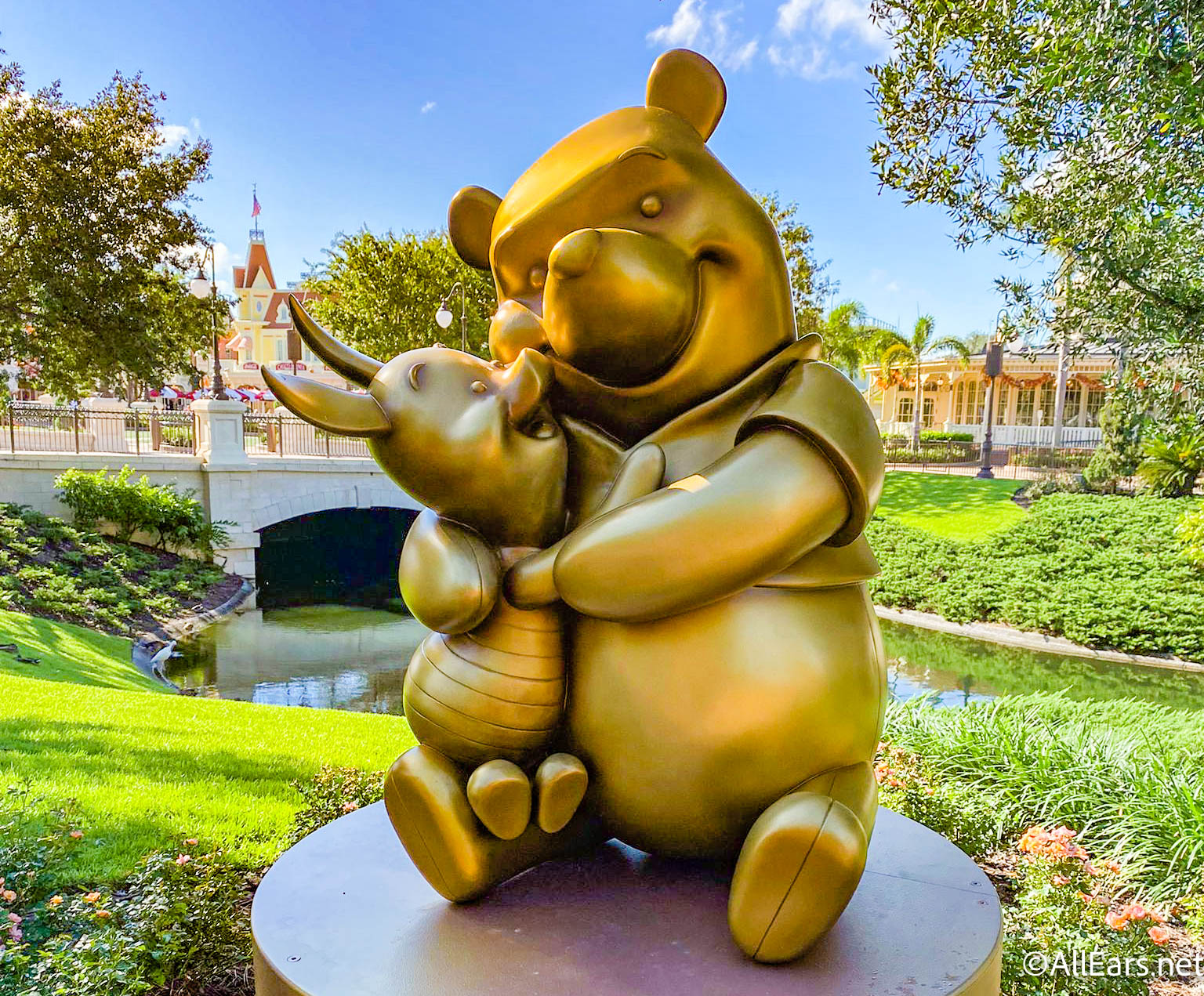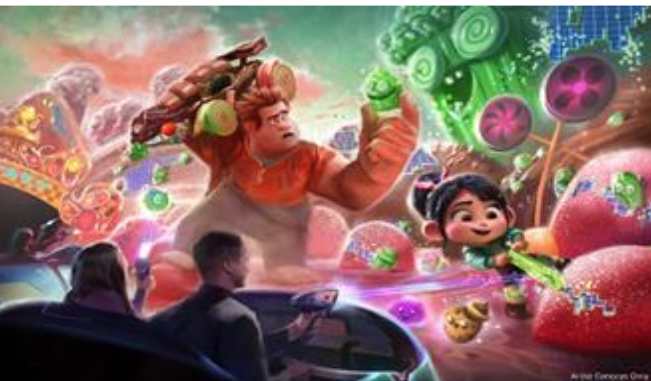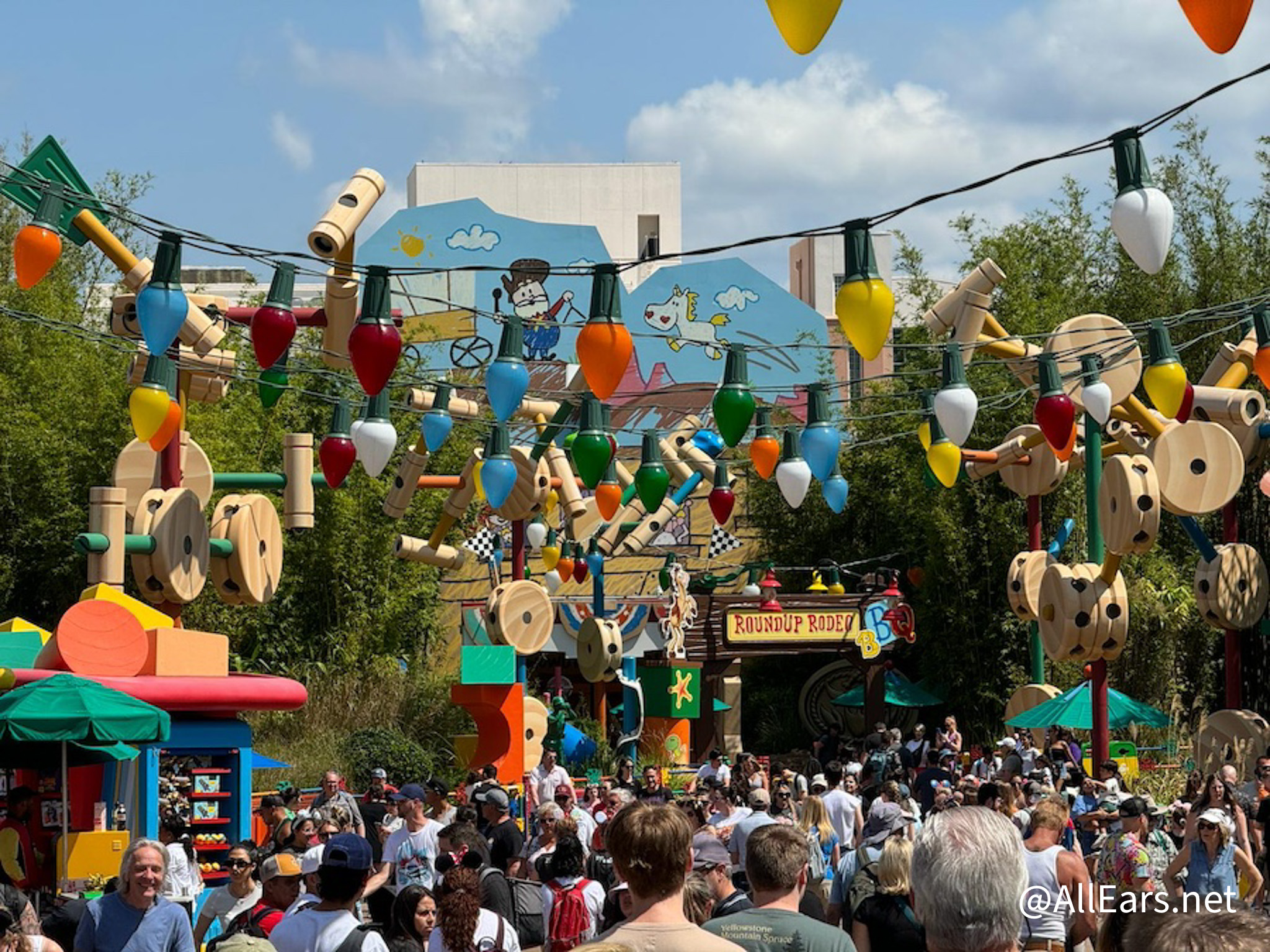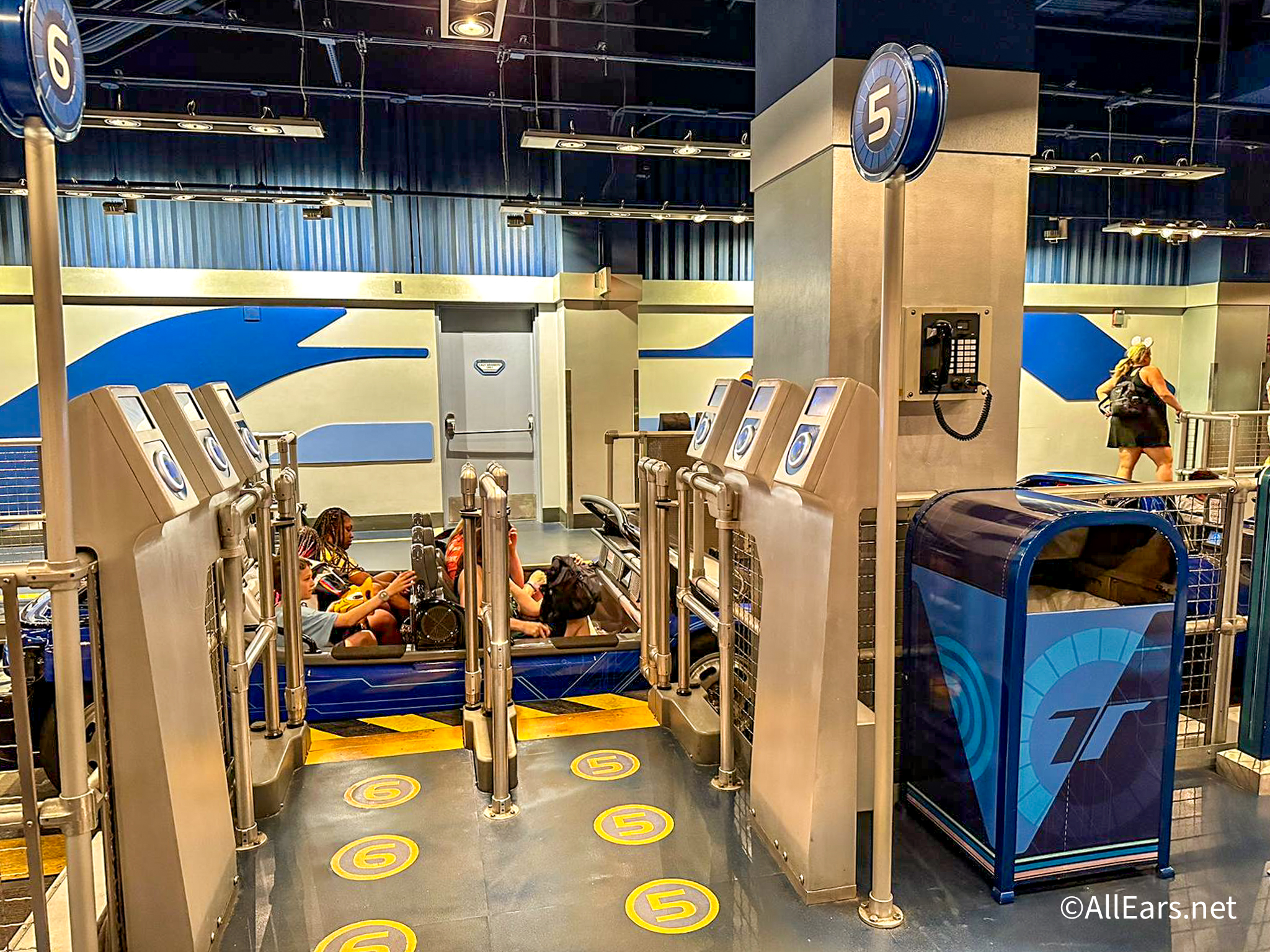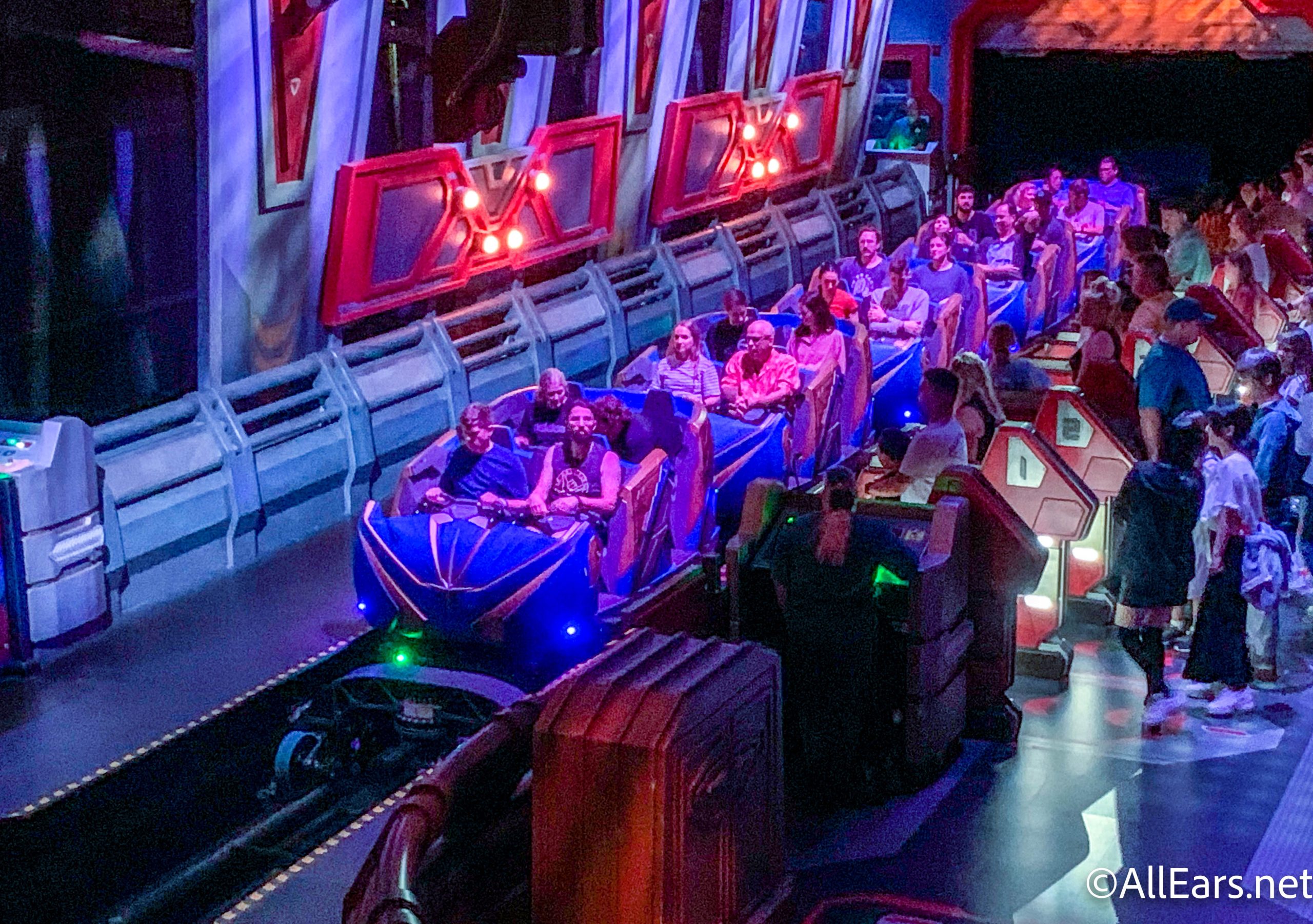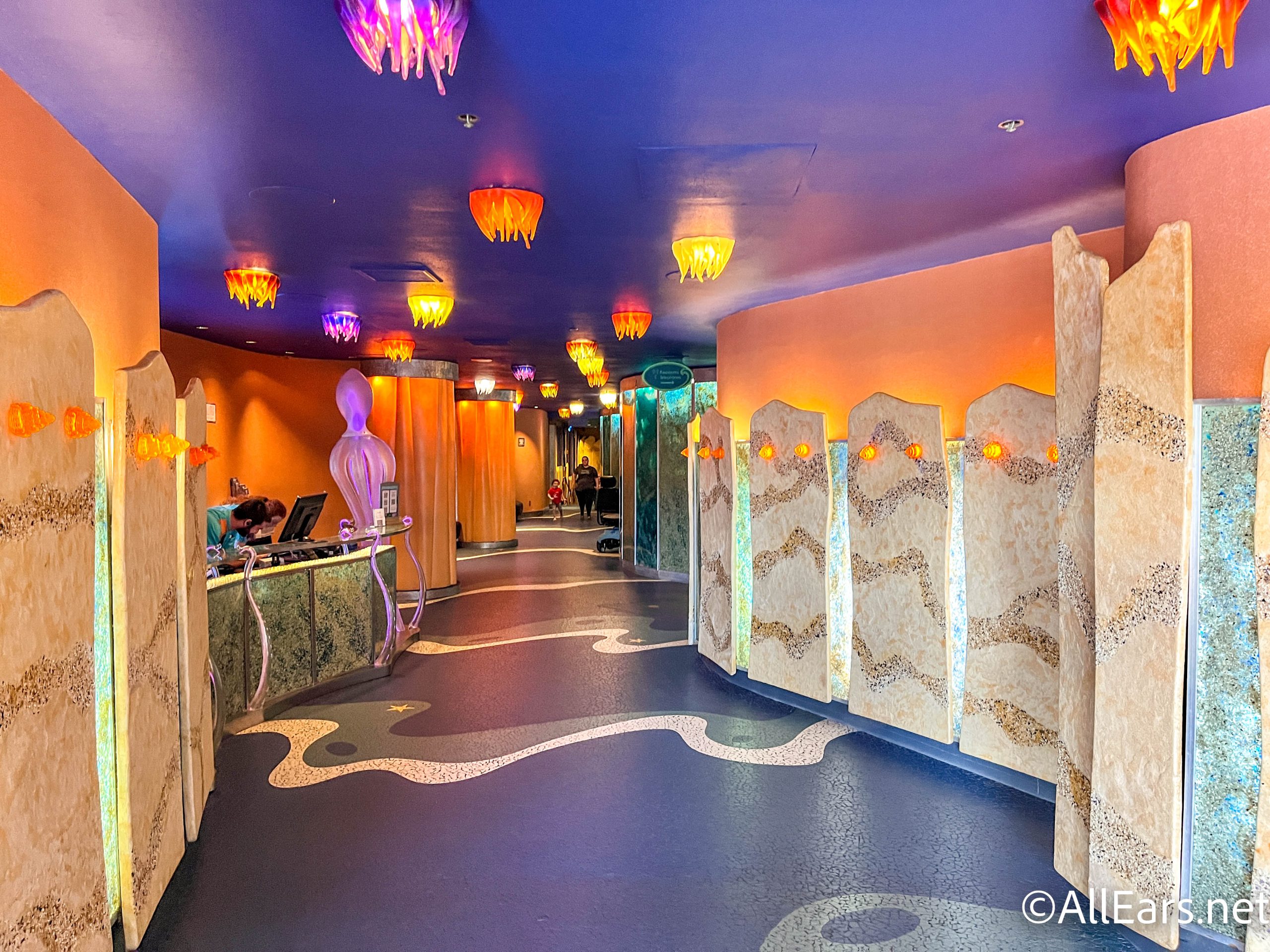Walt Disney World Chronicles: Universe of Energy Dinosaurs
by Jim Korkis
Disney Historian
Feature Article
This article appeared in the August 1, 2017 Issue #932 of ALL EARS® (ISSN: 1533-0753)
Editor's Note: This story/information was accurate when it was published. Please be sure to confirm all current rates, information and other details before planning your trip.
The recent announcement that Ellen's Energy Adventure in Epcot's Universe of Energy pavilion would be closing after August 13, started me wondering about that attraction. How did dinosaurs end up in a pavilion devoted to energy?
The Sinclair Oil Corporation started in 1916 and its famous logo was a green dinosaur silhouette that was reminiscent of a brontosaurus. The company sponsored pavilions at both the Chicago World's Fair 1933-34 and the New York World's Fair 1964-65 that featured animated life-sized dinosaur figures, amazing and delighting visitors. The pavilions promoted the correlation between the formation of petroleum deposits and dinosaurs, now a largely discredited misconception. (Aside: The famous Sinclair logo is parodied in the Pixar films Toy Story (1995) and Cars (2006) as being the emblem of the "DinoCo" gas and oil chain and in the Disney television series Dinosaurs (1991), the family is surnamed Sinclair.)
There was never a large enough population of dinosaurs, even over millions of years, to ever produce the amount of oil and gas that exists — even ignoring the complicated special circumstances that would need to take place to convert a dead dinosaur into fossil fuel. Scientists now agree that more than 90 percent of oil came from trees and vegetation, although much of that was from the time period of when dinosaurs walked the Earth. Yet generations of people grew up thinking that the oil and gas coming out of the ground was from decomposed dinosaurs, a concept that many people still believe today.
The original narration for the Universe of Energy pavilion when it first opened in October 1982 was the following:
Narrator: "Sunlight. The original source of energy in all fossil fuels. Its radiance falling upon the seas of Earth, gives rise to the first stirrings of life. Myriad creatures evolved, feeding upon plants and each other, capturing the sun's energy for themselves. As death comes, there begins a ceaseless silent snowfall of organic matter, drifting downward with other sediments, accumulating layer after layer upon the ocean floor. Finally, time, heat, and pressure transform the sediments into shale, entombing countless remains of marine life.
"Eons of time pass. The shale is buried still more deeply and its organic material transformed into oil and gas. These fossil fuels then begin to creep into surrounding layers of more permeable rock. The endless retching of the Earth's crust causes these strata to be folded and broken, sometimes trapping oil and gas in the porous rock. On the surface, vast new forms of plant life take root.
"As sunlight floods the lush primeval forests, every plant and tree captures a bit of this energy. In the ageless cycle of life, these living things too wither and fall. In marshy areas, the decaying limbs and leaves form a spongy mass of peat. For near endless millennia, the process continues until marshes and swamps finally disappear, sinking deeper under cover of mud and sand. Once again heat, pressure, and time work a remarkable transformation.
"The peat turns into coal. The formation of fossil fuels occurred over a span of millions upon millions of years. Much of the Earth's present supply was deposited during the primeval era when great reptiles roamed the land. Come with us now and experience a few moments from that dark and mysterious past."
I think the real reason dinosaurs are in the Universe of Energy pavilion is because of Walt Disney's fascination with making dinosaurs "real" for modern audiences.
It began with the animated feature Fantasia (1940). Walt said he wanted the "Rite of Spring" section focusing on the reign and extinction of the dinosaurs to look "as though the studio had sent an expedition back to earth 60 million years ago." The studio contacted museums and world-famous authorities like Roy Chapman Andrews, Julian Huxley, Barnum Brown, and Edwin P. Hubble, with detailed requests for information. Disney animators were confronted with the challenge of how to draw a dinosaur in movement. The director told the puzzled animators to "just draw a 12-story building in perspective, then convert it into a dinosaur and animate it."
Walt told the animators: "Don't make them cute animals. Make them real." To help achieve a sense of size, the camera level was kept low so audiences were always looking up at the massive animals.
Paleontologists had reconstructed skeletons of the extinct giants, but how does a Stegosaurus tail move and what was the skin texture and skin color like? Disney animators had to use their knowledge of balance, weight, and color as well as experience drawing real animals and were able to create a reasonable approximation that garnered accolades in the scientific community.
Pterodactyls took flight while a herd of Brontosauruses quietly grazed in a lake in the film, and those images were later translated into three dimensions at the Disney theme parks.
Time magazine reported: "The New York Academy of Science asked for a private showing because they thought [Fantasia's] dinosaurs better science than whole museum loads of fossils and taxidermy."
An edited version of just the dinosaur segment with narration was released to schools to be used in science classes and other organizations through Disney Educational Media under the title "A World Is Born" as early as the 1950s. Stephen Jay Gould, who went on to become one of the century's great evolutionary biologists, claimed that he became enthused with dinosaurs as a child thanks to seeing this film.
One of the most memorable scenes in that short and the original feature included a climactic battle between a Stegosaurus and a vicious, red-eyed Tyrannosaurus Rex that could never have happened, since those animals lived in different eras. It was such an iconic scene that it became an integral part of both Disneyland and Walt Disney World.
Walt's next big step into the prehistoric world was roughly two decades later: actual gigantic moving dinosaurs using Disney's then-new technology of audio-animatronics. The idea was to do a more authentic and impressive dinosaur show than Sinclair's Dinoland that proved so popular at the New York World's Fair that it went on as a traveling exhibit and spawned souvenir toys.
For the Ford Motor Company's 1964 World's Fair Pavilion, the Ford Magic Skyway, Walt had Imagineers Claude Coats (who loved dinosaurs), Marc Davis, and Blaine Gibson devise a prehistoric world with dinosaurs and cavemen for the earliest scene. These full-sized dinosaurs were sculpted backstage at Disneyland in a pre-fab building with an 18-foot doorway to be able to get the figures in and out. Gibson, who would later sculpt pirates and presidents, supervised sculptors like Howard Ball, who had sculpted dinosaurs for the La Brea Tar Pits, and former Yale art professor George Snowden. Gibson himself concentrated on the facial areas. He noted, "We are drawn to the head. When we look at a wild animal we are drawn to the eyes."
The show premiered at the World's Fair on April 22, 1964, in one of the largest pavilions at the fair (290,000 square feet, more than twice the size of Disneyland's Pirates of the Caribbean). The show building was as long as three football fields, 10 stories high, and filled with Disney magic.
Visitors boarded one of 160 real Ford convertibles (each one cleaned and polished between every trip) traveling two parallel elevated roadways at speeds of up to eight miles an hour. It was a precursor to the WEDway Peoplemover. The roads took them through a "time tunnel" from the time of the dinosaurs to great moments in early man's development to finally the glistening domes of "Space City" in just 12 minutes.
The dinosaurs, after failed attempts to get Ford to sponsor a pavilion at Disneyland, were relocated to the only area that could hold them, the grand finale of the Grand Canyon Diorama on the Santa Fe & Disneyland railroad. Forty-six audio-animatronics dinosaurs were relocated to the west coast and installed as a glimpse into what the Grand Canyon may have looked like millions of years ago. The new addition debuted in July 1966. Once again, the climax was the battle between the Tyrannosaurus Rex and the Stegosaurus in a bubbling lava-filled environment.
The Universe of Energy pavilion at Epcot offered a similar experience. The attraction has a seven-minute journey through a scenic backdrop diorama surrounding a primeval forest. The diorama stretches 32 feet high, 515 feet across and took three artists nearly 6,000 hours to paint.
Of course, no pictures exist of such a location, so the Imagineers consulted well-known paleontologists and paleobotanists to learn as much as they could about the plants and animals of millions of years ago. Hundreds of books, publications, museum plates and exhibits and fossils were reviewed. Imagineers even used research to try to approximate the actual sounds prehistoric creatures might have made. However, this was not meant to be a museum, but an entertainment, so certain things were exaggerated and sometimes re-created bigger than they probably were for dramatic effect.
The 36 dinosaurs were the largest audio-animatronics animals ever to be fabricated by Imagineering. They were so huge that they had to be placed in the building first and then the roof installed overhead. However, they were not as challenging as making a prehistoric tree. The forest is landscaped with 250 pre-historic trees that rise up to 40 feet overhead.
A lightweight foamed plastic, similar to the cellulose structure of the plants' woody pulp, was used to capture the tensile and compressive characteristics of a real tree that would "sway with the breeze". The plastics used to fabricate the trees were actually made from the fossil fuels created by the real trees of pre-history.
Fog filled the warm room, along with swampy smells made by WED Smellitzers. The first creatures you see include a giant millipede and an edaphosaurus. The biggest dinosaurs you witness in the swamp are a herd of brontosauruses lazily munching water plants. Duck-billed trachodons are seen bathing in a pool of water. A number of Ornithomimus watch helpless as one of their own sinks into a boiling tar pit. Numerous Pteranodons perch menacingly on cliffs and rocks. And on an overhead cliff a Stegosaurus fights another dinosaur, which was reconfigured to be the more historically accurate Allosaurus.
On September 15, 1996, after a rehab, Universe of Energy reopened with the subtitle "Ellen's Energy Adventure." For a short time, the subtitle was "Ellen's Energy Crisis," but then changed to "Adventure." Because of the latest research that indicated that dinosaurs were more like birds than lizards, the audio-animatronics creatures were repainted brighter with more stripes and markings. The flora was rehabbed as well.
Today, guests love dinosaurs just as much as they have for more than a century. While some frequent visitors may bypass this pavilion, for those who take the time, the mighty dinosaurs still reign supreme.
Remember, if you want to see them one last time, you have until August 13, when the attraction will close to make way for an attraction themed around Marvel's "Guardians of the Galaxy" movies.
= = = = = = = = = = = = =
RELATED LINKS
= = = = = = = = = = = =
Guardians of the Galaxy and Ratatouille Attractions Coming to Epcot
Disney's participation at the 1964-1965 New York World's Fair
Disneyland Railroad page (recently updated with new photos of the dioramas)
VIDEO: Disneyland Railroad (with the dioramas, starting at 5:11)
Other features from the Walt Disney World Chronicles series by Jim Korkis can be found in the AllEars® Archives.
ABOUT THE AUTHOR:
Disney Historian and regular AllEars® Columnist Jim Korkis has written hundreds of articles about all things Disney for more than three decades. As a former Walt Disney World cast member, Korkis has used his skills and historical knowledge with Disney Entertainment, Imagineering, Disney Design Group, Yellow Shoes Marketing, Disney Cruise Line, Disney Feature Animation Florida, Disney Institute, WDW Travel Company, Disney Vacation Club and many other departments.
He is the author of several books, including his newest, Secret Stories of Disneyland, available in both paperback and Kindle versions.
-o-o-o-o-o-o-o-o-o-o-o-
Editor's Note: This story/information was accurate when it was published. Please be sure to confirm all current rates, information and other details before planning your trip.


